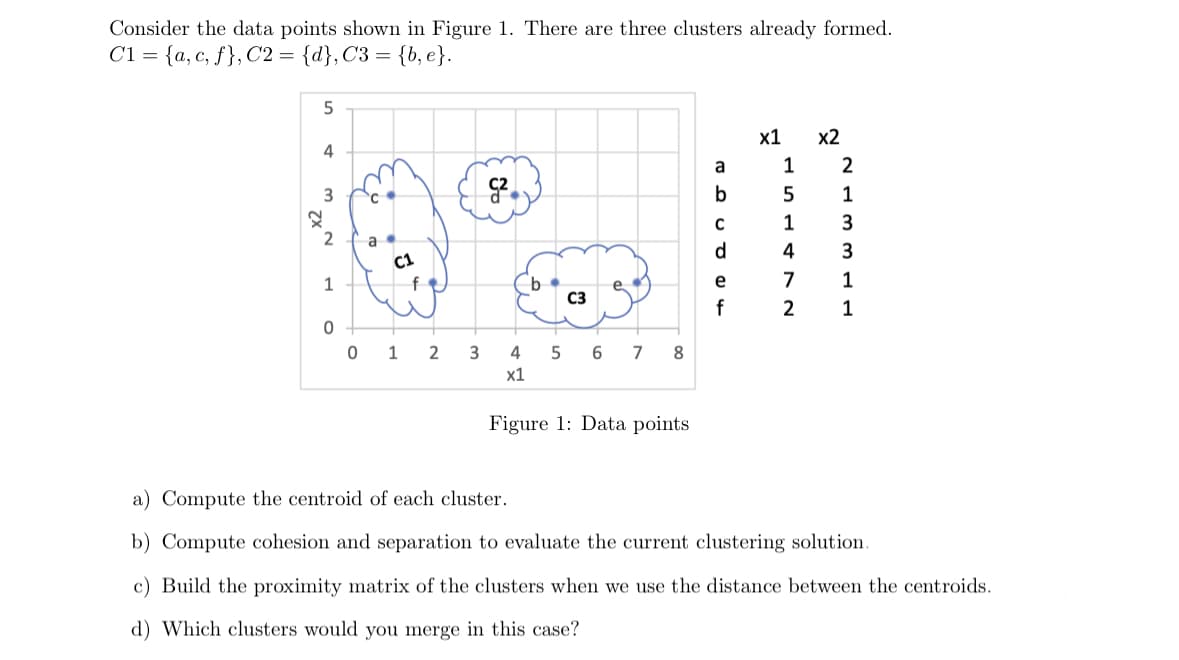Consider the data points shown in Figure 1. There are three clusters already formed. C1 = {a, c, f}, C2 = {d}, C3 = {b, e}. x2 5 4 3 2 1 0 C a . C1 0 1 2 3 G² C3 5 6 7 8 4 x1 Figure 1: Data points a Je b C d e @4 f x1 15L4 1 2 4 x2 72 213 1 3 3 1 7 1 IT 2 1 a) Compute the centroid of each cluster. b) Compute cohesion and separation to evaluate the current clustering solution. c) Build the proximity matrix of the clusters when we use the distance between the centroids. d) Which clusters would you merge in this case?
Consider the data points shown in Figure 1. There are three clusters already formed. C1 = {a, c, f}, C2 = {d}, C3 = {b, e}. x2 5 4 3 2 1 0 C a . C1 0 1 2 3 G² C3 5 6 7 8 4 x1 Figure 1: Data points a Je b C d e @4 f x1 15L4 1 2 4 x2 72 213 1 3 3 1 7 1 IT 2 1 a) Compute the centroid of each cluster. b) Compute cohesion and separation to evaluate the current clustering solution. c) Build the proximity matrix of the clusters when we use the distance between the centroids. d) Which clusters would you merge in this case?
Related questions
Question

Transcribed Image Text:Consider the data points shown in Figure 1. There are three clusters already formed.
C1 = {a, c, f}, C2 = {d}, C3 = {b, e}.
5
4
C²
som
b
C3
3
2 a
1
0
0
C1
f
1 2 3 4 5 6 7 8
x1
Figure 1: Data points
a
b
с
d
e
x1 x2
f
1 2
5 1
1 3
4 3
7 1
2 1
a) Compute the centroid of each cluster.
b) Compute cohesion and separation to evaluate the current clustering solution.
c) Build the proximity matrix of the clusters when we use the distance between the centroids.
d) Which clusters would you merge in this case?
Expert Solution
This question has been solved!
Explore an expertly crafted, step-by-step solution for a thorough understanding of key concepts.
This is a popular solution!
Trending now
This is a popular solution!
Step by step
Solved in 6 steps
